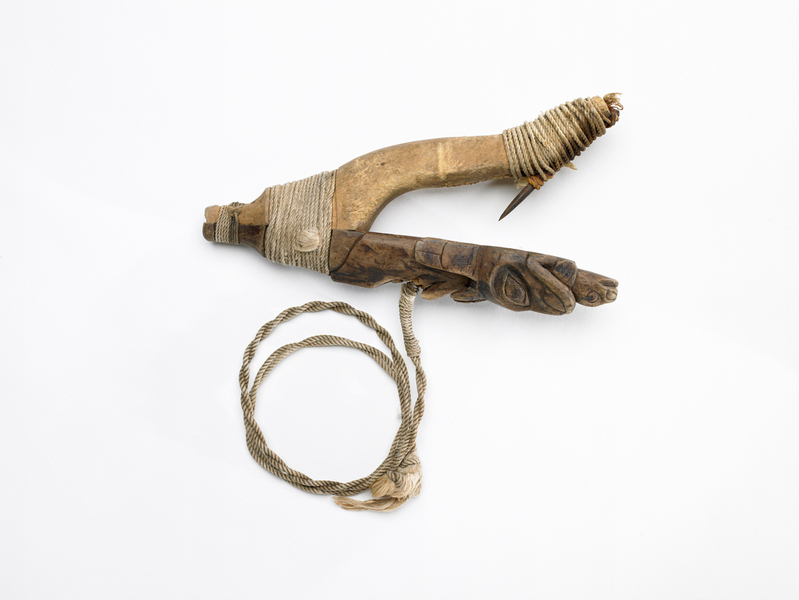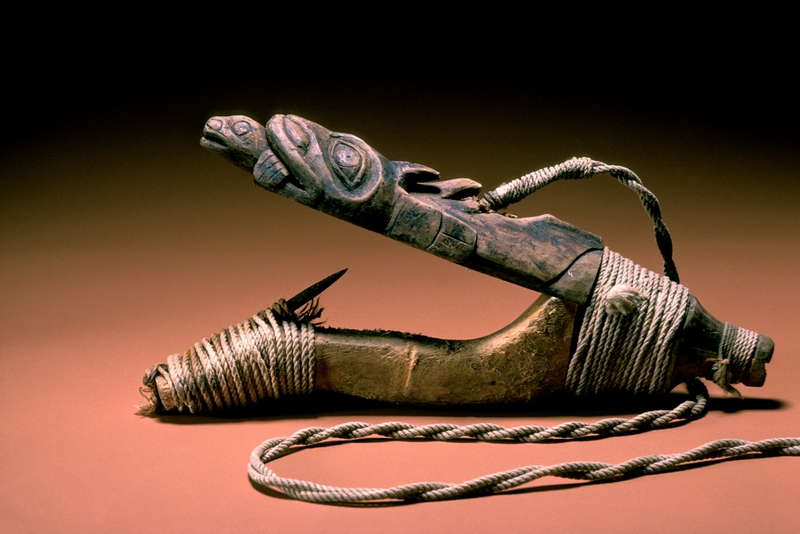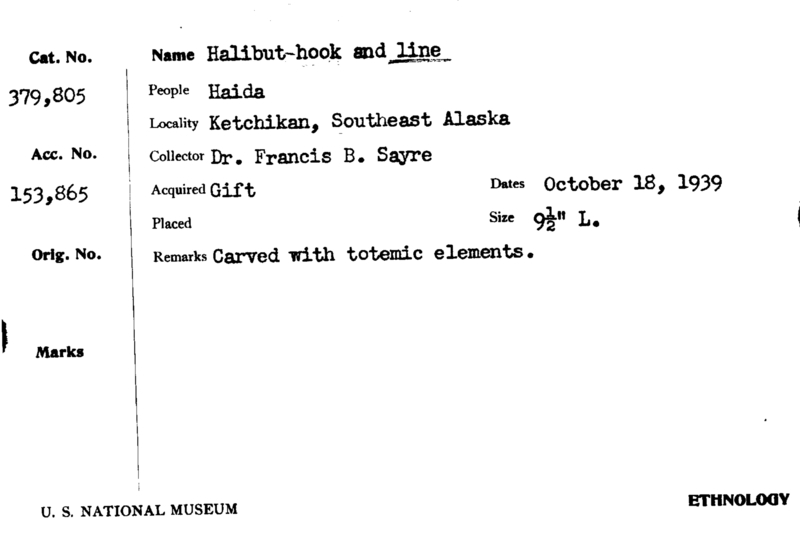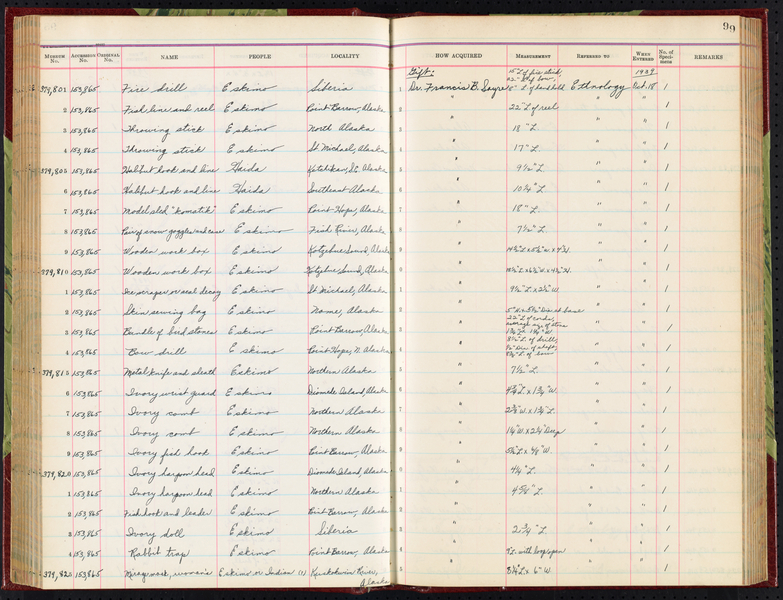Halibut Hook And Line Item Number: E379805-0 from the National Museum of Natural History




Notes
This object is on loan to the Anchorage Museum at Rasmuson Center, from 2010 through 2027.Source of the information below: Smithsonian Arctic Studies Center Alaska Native Collections: Sharing Knowledge website, by Aron Crowell, entry on this artifact http://alaska.si.edu/record.asp?id=703 , retrieved 5-17-2012: Halibut hook, Haida. Halibut surpassed every other food in the traditional diet. Individual matrilineages claimed ownership of undersea "banks" (plateaus) where the fish congregate. Early spring halibut fishing brought some of the first fresh food of the year, and people worked to lay in a large supply, the men pulling the fish from the bottom on wooden hooks and the women slicing them into fillets and drying them for storage. On summer trading voyages, the Haida exchanged dried halibut and seaweed to the Tsimshian for eulachon grease and berries. On this halibut hook, a predatory creature is shown capturing a seal.
Item History
- Made in Ketchikan, Revillagigedo Island, Alaska, USA
- Collected by Dr. Francis B. Sayre in Ketchikan, Revillagigedo Island, Alaska, USA
- Received on September 29, 1939
What
- Name
- Halibut Hook And Line
- Identification Number
- E379805-0
- Type of Item
- fish hook
Who
- Culture
- Haida
- Field Collector
- Dr. Francis B. Sayre
Where
- Holding Institution
- National Museum of Natural History
- Made in
- Ketchikan, Revillagigedo Island, Alaska, USA
- Collected in
- Ketchikan, Revillagigedo Island, Alaska, USA
When
- Acquisition Date
- on September 29, 1939
Other
- Accession Number
- 153865